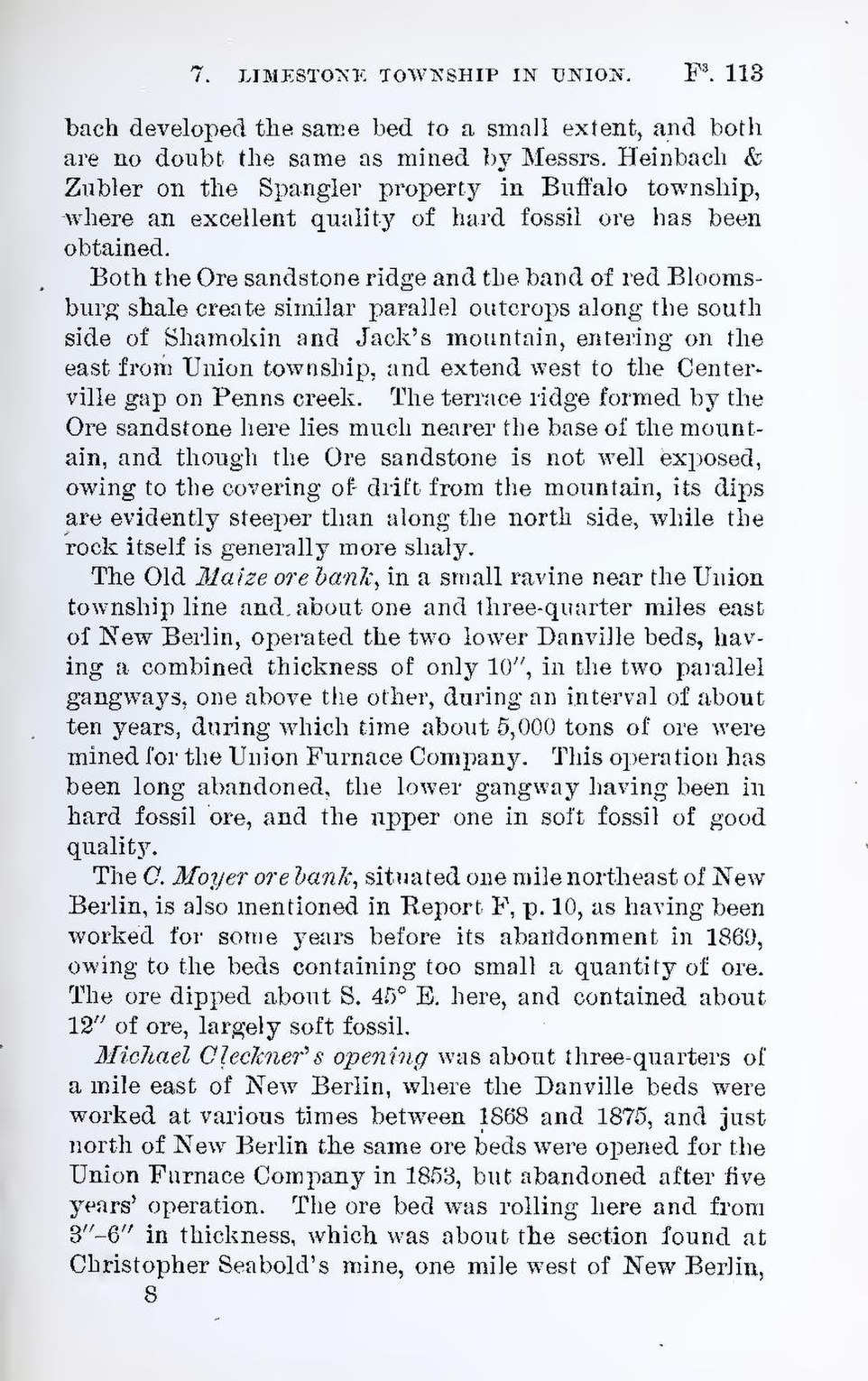bach developed the same bed to a small extent, and both are no doubt the same as mined by Messrs. Heinbach & Zubler on the Spangler property in Buffalo township, where an excellent quality of hard fossil ore has been obtained.
Both the Ore sandstone ridge and the band of red Bloomsburg shale create similar parallel outcrops along the south side of Shamokin and Jack’s mountain, entering on the east from Union township, and extend west to the Centerville gap on Penns creek. The terrace ridge formed by the Ore sandstone here lies much nearer the base of the mountain, and though the Ore sandstone is not well exposed, owing to the covering of drift from the mountain, its dips are evidently steeper than along the north side, while the rock itself is generally more shaly.
The Old Maize ore bank, in a small ravine near the Union township line and about one and three-quarter miles east of New Berlin, operated the two lower Danville beds, having a combined thickness of only 10″, in the two parallel gangways, one above the other, during an interval of about ten years, during which time about 5,000 tons of ore were mined for the Union Furnace Company. This operation has been long abandoned, the lower gangway having been in hard fossil ore, and the upper one in soft fossil of good quality.
The C. Moyer ore bank, situated one mile northeast of New Berlin, is also mentioned in Report F, p. 10, as having been worked for some years before its abandonment in 1869, owing to the beds containing too small a quantity of ore. The ore dipped about S. 45° E. here, and contained about 12″ of ore, largely soft fossil.
Michael Cleckner’s opening was about three-quarters of a mile east of New Berlin, where the Danville beds were worked at various times between 1868 and 1875, and just north of New Berlin the same ore beds were opened for the Union Furnace Company in 1853, but abandoned after five years’ operation. The ore bed was rolling here and from 3″–6″ in thickness, which was about the section found at Christopher Seabold’s mine, one mile west of New Berlin,
